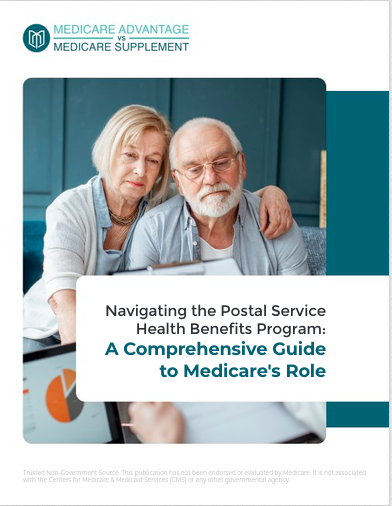Key Takeaways
-
Medicare Part D may appear straightforward, but it’s layered with rules that can lead to unexpected costs and missed deadlines.
-
Understanding enrollment periods, coverage phases, and plan restrictions can help you avoid common missteps that many face each year.
Why Part D Deserves a Closer Look
Medicare Part D is the part of Medicare that covers prescription drugs. While it’s optional, many people choose to enroll because of the growing costs of medications. But here’s the catch—what seems like a basic add-on often becomes one of the most confusing parts of Medicare. It has deadlines, penalties, changing coverage phases, and different formularies across plans. All of these elements can throw you off if you’re not prepared.
Understanding When to Enroll
The first thing that trips up a lot of people is enrollment timing. Part D enrollment is not automatic unless you’re enrolled in a Medicare Advantage plan that includes drug coverage. If you miss your enrollment window, you could be penalized.
Initial Enrollment Period (IEP)
-
Begins three months before the month you turn 65
-
Ends three months after your birth month
-
Total window: 7 months
Missing this window means you may have to wait for the next General Enrollment Period and pay a late enrollment penalty.
Annual Enrollment Period (AEP)
-
October 15 to December 7 each year
-
You can join, switch, or drop a Part D plan
-
Changes take effect January 1 of the following year
Special Enrollment Periods (SEPs)
You may qualify for an SEP if you:
-
Move out of your plan’s service area
-
Lose other creditable drug coverage
-
Live in or move out of a skilled nursing facility
If none of these apply and you miss your window, you could end up with no coverage or higher costs.
The Late Enrollment Penalty Is Real
A common misconception is that you can just wait to sign up for Part D until you need medications. Unfortunately, that strategy often backfires. If you go without creditable prescription drug coverage for 63 days or more after your Initial Enrollment Period ends, you’ll be subject to a late enrollment penalty.
The penalty is calculated as 1% of the national base beneficiary premium for every full month you were without coverage. This penalty is added to your monthly premium for as long as you have Part D—essentially, it sticks with you for life.
Decoding the Coverage Phases
Another confusing aspect of Part D is the way coverage is structured. Part D has four phases, and your costs vary dramatically depending on where you are in the cycle.
1. Deductible Phase
You pay the full cost of your prescriptions until you reach your plan’s deductible. In 2025, the maximum deductible allowed under Part D is $590.
2. Initial Coverage Phase
After your deductible is met:
-
You pay a copayment or coinsurance
-
Your plan covers the rest
-
This phase ends when total drug costs (what you and the plan pay) reach $5,030
3. Catastrophic Coverage Phase
Starting in 2025, the catastrophic phase begins once your out-of-pocket costs reach $2,000. This is a major change and replaces the old system that required continued cost-sharing beyond that point.
In this phase:
-
You pay nothing for covered prescriptions for the rest of the year
-
The plan covers the full cost
This new cap eliminates what used to be called the “donut hole” or coverage gap.
Formularies Can Change Every Year
Each Part D plan has its own formulary—the list of medications it covers. Plans are allowed to update their formularies annually. That means a drug you rely on in 2025 may not be covered in 2026, or may be placed in a different tier with higher costs.
Here’s what to keep in mind:
-
Always check the Annual Notice of Change (ANOC)
-
Review your plan during the Annual Enrollment Period
-
Ensure your medications are still covered and at a reasonable cost
Tiers, Restrictions, and Prior Authorization
Even if your medication is listed on the formulary, access might not be simple. Many plans divide their drug lists into tiers, and the tier determines your out-of-pocket cost.
-
Tier 1: Preferred generics (lowest cost)
-
Tier 2: Generic drugs
-
Tier 3: Preferred brand-name drugs
-
Tier 4: Non-preferred drugs
-
Tier 5: Specialty drugs (highest cost)
In addition to tiers, some drugs come with restrictions:
-
Prior Authorization: You must get approval from the plan before the medication is covered.
-
Step Therapy: You may have to try less expensive drugs first.
-
Quantity Limits: Only a certain amount of the drug is covered per month.
Pharmacies and Preferred Networks
Where you fill your prescription also matters. Many plans have preferred pharmacy networks. If you use a pharmacy outside of this network, you could end up paying significantly more.
What to do:
-
Confirm your pharmacy is in-network
-
Compare costs between preferred and standard pharmacies
-
Consider mail-order options for maintenance medications
Coordination with Other Coverage
If you have other coverage, such as from an employer or union, it’s important to find out whether it’s considered creditable. If it is, you can delay Part D without penalty. But if it isn’t, and you go without Part D for too long, the late enrollment penalty will apply.
Be sure to:
-
Ask your current plan for a “Notice of Creditable Coverage”
-
Keep that notice in your records
-
Reassess your needs each year as circumstances change
Common Misunderstandings That Lead to Trouble
Despite the best intentions, many people fall into the same traps every year:
-
Assuming enrollment is automatic: It isn’t, unless you have other Medicare Advantage coverage.
-
Not reviewing plans annually: Plans change, and so do your health needs.
-
Forgetting to check the formulary: Your medications might not be covered anymore.
-
Overlooking pharmacy network rules: You could be spending more than necessary.
-
Ignoring the late enrollment penalty: It adds up and never goes away.
Planning Ahead Is Your Best Defense
You don’t have to become a Medicare expert overnight, but being proactive with Part D can save you money and frustration. Each year, take time to:
-
Review your current plan
-
Check your medications and their tier levels
-
Look at changes to premiums and out-of-pocket costs
-
Re-evaluate pharmacy options
Even a small change—like switching to a preferred pharmacy—can significantly reduce your expenses.
Why Understanding Part D Is Worth the Effort
It may seem overwhelming at first, but getting a handle on Medicare Part D can protect you from avoidable penalties and high drug costs. The program is designed to help, but only if you know how to use it correctly.
When in doubt, speak with someone who understands the system inside and out. Getting advice from a licensed agent listed on this website can help you make informed decisions and ensure your plan still fits your needs.










